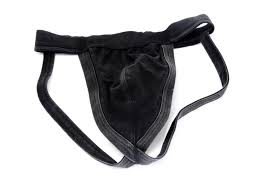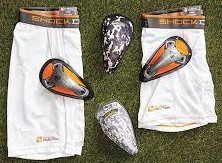Discover Do Hockey Players Wear Cups for protection in this comprehensive exploration. Learn about the importance of this gear, potential safety concerns, and cultural considerations in the world of hockey.
Introduction
Embark on a journey through the world of hockey gear as we delve into the question: Do hockey players wear cups for protection? In this comprehensive exploration, we unravel the significance of this essential equipment, addressing potential safety concerns and shedding light on cultural considerations within the sport. From the importance of protective cups in preventing serious injuries to insights into goaltenders’ unique strategies for enhanced protection, this article navigates the intricacies of player safety on the ice. Join us as we uncover the mysteries behind hockey gear and equip you with valuable knowledge to enhance your understanding of this beloved sport.
Do Hockey Players Wear Cups?
Yes, hockey players commonly wear protective cups. A cup is a crucial piece of equipment designed to safeguard the groin area from potential impacts and injuries during gameplay. It consists of a hard outer layer lined with softer padding to provide adequate protection. While some players may find wearing a cup initially uncomfortable, its importance in preventing serious injuries, particularly in contact sports like hockey, cannot be overstated. Therefore, wearing a cup is a standard practice among hockey players to ensure their safety on the ice.
What Are The Protective Cups?
A protective cup is a crucial piece of equipment designed to safeguard athletes, particularly in contact sports like hockey. Comprising a hard outer layer and softer padding, it shields the groin area from potential impacts and injuries.
Distinguishing Between a Cup and a Jockstrap
While some may confuse protective cups with jockstraps, they serve distinct purposes. A jockstrap primarily provides additional support but lacks the comprehensive protection against hits that a cup offers.
Applicability Across Sports
Contact vs. Non-Contact Sports
In non-contact activities like running or cycling, the risk of projectile impacts to the groin is minimal, rendering additional protection unnecessary. A jockstrap suffices for support in these contexts.
Special Considerations for Contact Sports
In contrast, contact-intensive sports like ice hockey demand heightened protection due to the likelihood of collisions and impacts. Here, the superior shielding provided by a protective cup is essential for player safety.
The Dangers of Not Wearing a Protective Cup
While the importance of wearing a protective cup in sports like hockey may seem obvious, harrowing tales underscore the critical necessity of this piece of equipment.
Real-Life Examples of Consequences
Case Study: Sami Salo
Defenseman Sami Salo of the Vancouver Canucks serves as a stark reminder of the dangers of not wearing a protective cup. During a game, Salo took a brutal hit to the groin area from a puck while blocking a shot. The forceful impact resulted in severe injury, necessitating immediate hospitalization.
The Grim Reality of the Injury
Salo’s injury was a result of a slapshot unleashed by Duncan Keith of the Chicago Blackhawks. The severity of the incident prompted Salo’s transport to the hospital via stretcher, highlighting the potential seriousness of such injuries. Medical professionals took precautionary measures, fearing potential testicular rupture.
Lessons Learned and Recommendations
Given the painful and potentially life-altering consequences of neglecting to wear a protective cup, it’s evident that this piece of equipment is non-negotiable for athletes, especially in high-impact sports like hockey. While anecdotes like Salo’s serve as cautionary tales, they also emphasize the importance of proactive safety measures.

Do Protective Cups Hinder a Player’s Ability?
Debates persist among players regarding the potential impact of wearing a protective cup on their performance on the ice. While concerns about hindrances to speed and mobility are common, it’s essential to examine these claims in detail.
Transitioning to Wearing a Cup
For some players, the transition to wearing a protective cup can indeed pose challenges. The rigid structure of the cup, often constructed from hard plastic, may initially feel uncomfortable and restrictive.
Adaptation and Acclimatization
Despite the initial discomfort, many players find that they can adapt to wearing a protective cup over time. With regular use, they grow accustomed to the sensation and can maintain their performance levels without hindrance.
Potential Benefits and Confidence Boost
Contrary to the notion of hindrance, some players argue that the added protection provided by a cup can bolster their confidence on the ice. With the knowledge that they are safeguarded against potential injuries, players may feel more emboldened to engage in physically demanding aspects of the game, such as blocking shots or engaging in board battles.
Exploring Varieties and Options
Fortunately, the market offers a plethora of options to accommodate varying comfort and fit preferences for players. While finding the perfect fit may require some experimentation, the benefits of a well-fitted protective cup far outweigh the initial effort.
Do Goaltenders Wear Protective Cups?
In the high-stakes world of hockey goaltending, the risk of being struck by a puck is a constant concern. Given their position as the last line of defense, goaltenders face a barrage of shots throughout the game, making protection of their groin area paramount.
Embracing Enhanced Protection
The Need for Extra Safety Measures
It may surprise many to learn that numerous goaltenders choose to augment their protection by wearing multiple cups. When a goalie extends their pads to block a shot, they leave themselves vulnerable, underscoring the necessity for reinforced safeguards.
The Emergence of Multi-Cup Usage
The trend of donning two or even three cups gained traction, perhaps spurred by a notable incident in 2014 involving Brian Elliot, goaltender for the Calgary Flames. Elliot shared a photo on Twitter revealing a cracked cup, a testament to the intense force exerted by a puck in such a sensitive area.
Personal Preferences and Equipment Choices
Many goaltenders have voiced their preferences regarding protective gear, including the option of wearing a traditional goalie double-cup and whether to supplement it with an additional layer. Given the inherent dangers and susceptibility to groin injuries in this position, goaltenders prioritize maximum padding for optimal safety.

Do Female Hockey Players Wear Protective Cups?
While protective cups are ubiquitous among male hockey players, the prevalence among their female counterparts, often referred to as “Jills,” differs. However, they remain a viable option for female athletes seeking enhanced safety on the ice.
The Role of Jills in Women’s Hockey
Alternative Terminology and Usage
In the realm of women’s hockey, protective cups are colloquially known as Jills. Although not as commonly worn as among male players, they serve a similar purpose in safeguarding the pelvic region from potential impacts.
Considerations for Safety and Regulation
At certain levels of play, especially in youth leagues, the use of Jills may be mandated for safety reasons. These protective garments offer robust padding, shielding players from the impact of pucks, sticks, and body contact.
Exploring Comfort and Efficiency
For female players, Jill shorts with built-in protectors offer a comfortable and practical alternative to traditional cups. While initially considered a minor investment, these garments prove invaluable in ensuring player safety and potentially averting costly medical expenses resulting from injuries.
FAQs
Why do hockey players wear protective cups?
Hockey players wear protective cups to safeguard their groin area from potential impacts and injuries during gameplay. The hard outer layer lined with softer padding provides adequate protection against hits, collisions, and flying pucks.
Are protective cups the same as jockstraps?
No, protective cups and jockstraps serve different purposes. While jockstraps primarily offer additional support, protective cups provide comprehensive protection against impacts. Cups are essential for contact sports like hockey due to the elevated risk of injuries.
Do female hockey players wear protective cups?
While protective cups are less common among female hockey players, some may opt for them, often referred to as “Jills.” These protective garments offer firm padding to safeguard the pelvic region from impacts and are mandated for safety reasons in certain leagues.
Do goaltenders wear protective cups?
Yes, goaltenders commonly wear protective cups to shield themselves from potential puck impacts during gameplay. Some goaltenders may even opt to wear multiple cups for enhanced protection, especially considering their vulnerable position on the ice.
Do protective cups hinder a player’s ability?
While some players may initially find wearing a protective cup uncomfortable, many adapt to it over time without hindering their performance. The added protection can boost players’ confidence, allowing them to engage more confidently in physically demanding aspects of the game.
Conclusion
In conclusion, the discussion surrounding the use of protective cups in hockey underscores their undeniable importance in ensuring player safety on the ice. From the essential role they play in preventing serious injuries to the insights into goaltenders’ unique strategies for enhanced protection, it’s evident that wearing a cup is a standard practice among hockey players. As players adapt and acclimatize to wearing protective cups, they not only mitigate risks but also bolster their confidence, enabling them to perform at their best without hindrance. With a myriad of options available to accommodate varying comfort and fit preferences, players can ensure both their safety and comfort on the ice, enhancing their overall experience in this beloved sport.
